The crochet step is called the edging of products. The technique for doing it is simple, perform a primitive harness Even beginner needlewomen can do it. The peculiarity of the method is in reverse knitting: the edges of things are processed not from right to left, but vice versa.
Where the technique of tying things with a crab step is applicable, features of the method
The crab stitch is used to trim the edges of knitted clothing (sleeves, necklines, bottoms of hats, outerwear and trousers). It can be part of the decor, a fixing or connecting element of the product.
The technique allows you to make a beautiful edging for home textiles: curtains, blankets and bedspreads, pillows. The same method can be used to tie decorative elements when making toys (leaves, petals, flowers, etc.).
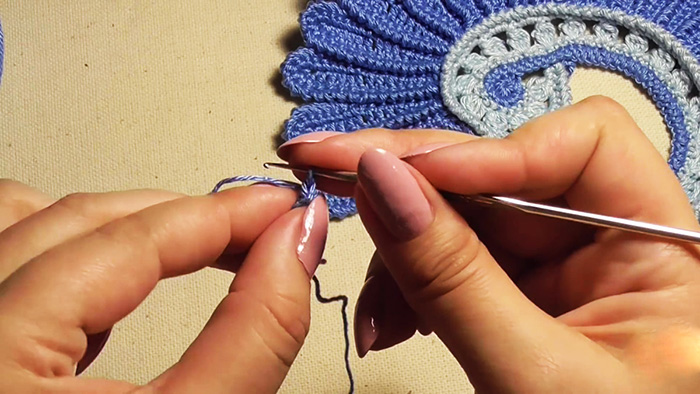
Crocheting a crayfish step will be unusual for beginners at first, since the technique involves crocheting items in the opposite direction. The edging can be done with the main color, like the entire item, or with contrasting yarn for decoration. It holds its shape well, preventing deformation of the edge of knitted items.
When loops are made in reverse order, the threads cross, which visually adds volume to the edge. The crab step prevents stretching of the products, even if their bottom is knitted with an elastic band. For ease of making the edging, it is better to knit the last row of loops with regular single crochets.
Conventions and abbreviations in master classes
The following abbreviations are used in the master classes:
- SC – single crochet.
- ССН – double crochet.
- P – loop.
- R – row.
- PP – lifting loop.
- VP – air loop.
Classic version of the crayfish step from left to right with single crochets
The crochet step of the crab for beginners should be learned on this method. The technique is similar to simple knitting with single crochets, only it is performed in the opposite direction. Start working with the last loop, located to the right of the working tool. Knit on the front side of the product in each loop of the previous row. If necessary, before performing the edging, the color of the thread is changed.
Edge binding algorithm:
- At the beginning of the row, make 1 PP.
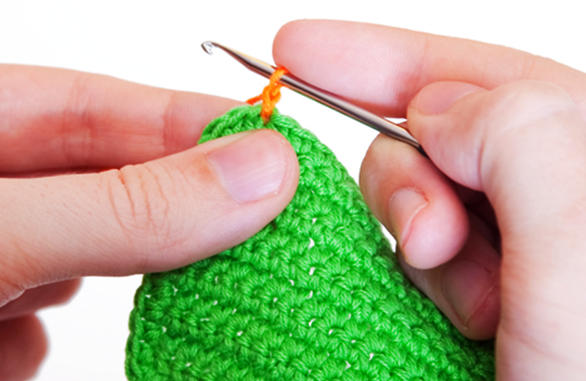
- Insert the hook into the loop of the previous row on the right, pull out the thread and knit a single crochet.
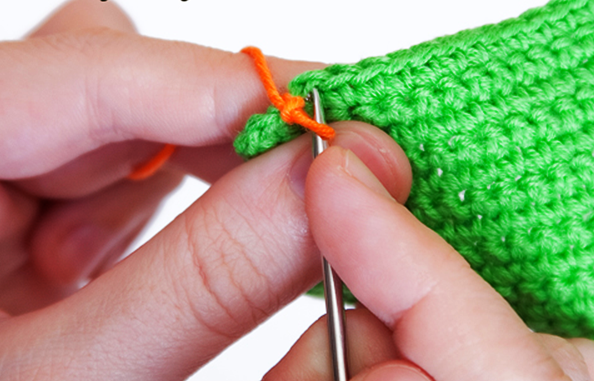
- Next, insert the hook into the next loop on the right in the same way and knit a single crochet.
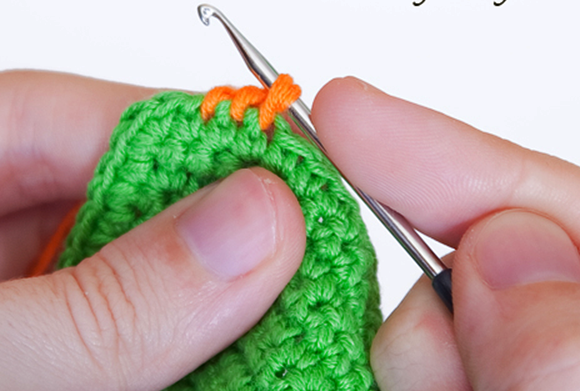
- Continue working sc from left to right until the end of the row.
Air loop tying method
Crocheting a crab step for beginners using this method will be as easy as using the previous one. The edging is done with the same single crochet stitches and also from left to right, only a VP is added between each loop.
Instructions for making the edging:
- At the beginning of the row, make 1 PP.
- Insert the hook into the loop of the previous row on the right, pull out the thread and knit a single crochet.
- Perform 1 VP.
- Next, insert the hook into the next loop on the right and knit a single crochet.
- Make 1 VP again.
- Repeat steps 4-5 until the end of the row.
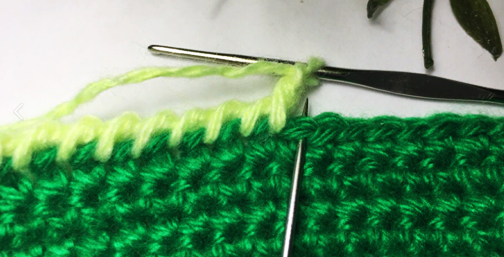
The binding is airy and elastic. The edge of the product with such a frame looks elegant. The technique is suitable for decorating the neck of a sweater, sleeves.
Lush double-sided binding
The technique of performing the crayfish step is suitable for framing knitted items that should look neat from the outside and inside. The method is suitable for decorating clothes, bedspreads, pillows, tablecloths.
Algorithm for performing work:
- At the beginning of the row, make 1 PP.
- Make a yarn over on the hook, insert the tool into the loop on the right, pull the thread out, make another yarn over and insert the hook into the same loop again and pull the thread out. Knit all 5 P on the tool together. You should get a voluminous column.
- After the column, knit 2 VP.
- The next P is knitted according to the same pattern as described in point 2.

- Next, make 2 VP again.
- Repeat knitting according to points 4-5 until the end of the row.
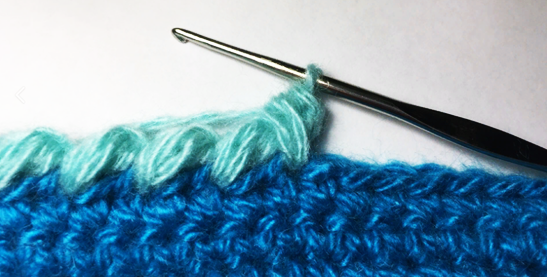
There are also other options for lush columns for edging products:
| Photo | Name | Peculiarity |
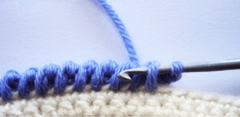 | Single crochet with 2 air loops | The knitting technique is similar to the lush crab step, only instead of 2, 1 P is knitted into each loop. Scheme:
|
 | Columns with 3 yarns | Knitting algorithm:
|
Mirror crab step
This technique of edging differs from the usual crayfish step in that the edging line is knitted from right to left, that is, as in regular crochet. When working, it is important to monitor the tension of the thread. If it is strong, the edge of the product will be pulled together, deformed. If the thread is too loose, the edging will be loose and will not hold its shape.
Crochet step rachiy for beginners in this technique should be knitted after mastering the basic methods of tying. You need to have an idea of what density the edge of the thing should be in order to be able to adjust the tension of the working thread.
Knitting algorithm:
- When the thing is knitted, the thread is not cut. The crab step is made from the last loop of the last row of the fabric. The loop on the hook should be pulled out a little.
- The working tool is inserted into the next loop of the row, and the thread is pulled out with a small margin.
- The hook is rotated around the extended loops by 360°.

- 2 P on the tool are knitted together. The hook is turned clockwise to the starting position.
- The entire row is performed with mirror loops, repeating points 2-4.
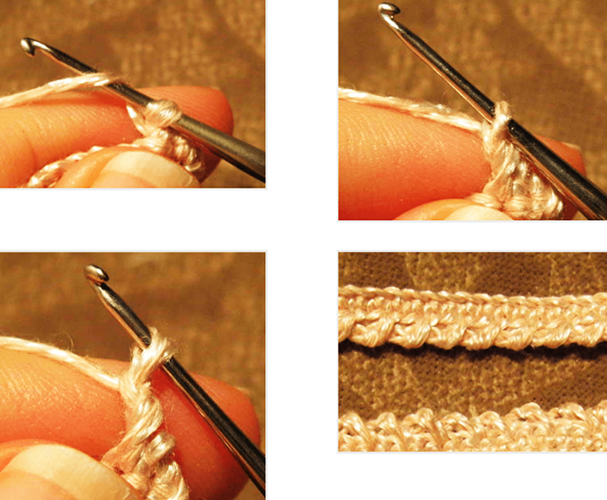
The edging technique is suitable for decorating the necklines of V-neck sweaters. It also goes well with Irish lace.
The mirror method can also be varied by using the number of yarn overs and chain stitches.
Beaded edge trim
Beads can be used to decorate bags, phone or eyeglass cases, home textiles, and even knitted jewelry. They don't always look appropriate on clothes: if you choose the wrong material, they will visually make a sweater or hat look childish or cheap. This type of decor should only be used on things where the beads won't interfere with their use.
When choosing beads, preference should be given to a contrasting color of the material with the yarn. Pearl, white and soft pink beads are considered universal.
Before you start tying, you need to string the beads on a thread. To do this, measure the perimeter of the edge of the knitted item, divide it by the number of beads or the required distance between them so that the decor is evenly distributed along the entire edge.
If the beads need to be arranged according to the pattern, then first draw a diagram that will make knitting easier. But in this case, they are strung on the nik in the reverse order.
Instructions for stringing beads on thick yarn:
- First, take a long needle with the smallest diameter and a large eye, into which you thread a thin sewing thread folded in half (you need to choose a thread that slides well: cotton, silk).
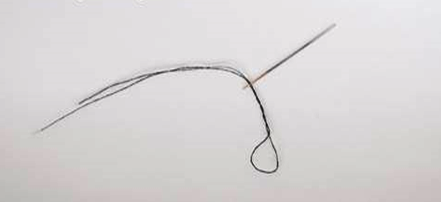
- The yarn is threaded into the resulting loop on the sewing thread.
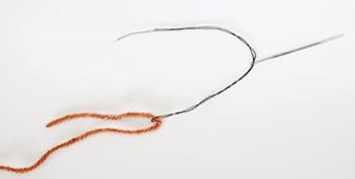
- Next, the beads are strung onto a needle.
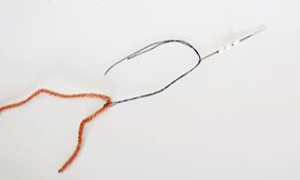
- The beads are moved from the needle onto the knitting thread.

If the knitting thread is thin, then it is immediately threaded into the needle and beads are strung on.
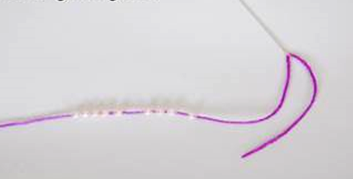
To prevent the beads from falling apart, the yarn is placed in a container of a suitable size. In the work, thin and strong threads should be used, and the hook diameter should be chosen small - No. 1 or No. 1.5.

The edge binding is done from the front side of the fabric, and on the edging the beads are located behind the work. When knitting, the beads will need to be constantly moved along the thread from the hook, so as not to accidentally catch an extra element and not knit it in the wrong place.
Algorithm for knitting a crayfish step with beads using single crochet stitches from right to left:
- After knitting the last row of the product, make 1 PP.
- Insert the hook into the next loop of the row, wrap the thread, move the bead close to the two loops on the hook and knit a single crochet, wrapping the thread behind the beads.

- Next, knit the entire edge using sc, placing the beads according to the previously outlined pattern.

In the same way, beads are knitted into the middle of the fabric, decorating clothes and textiles. Similarly, you can knit a crab step from left to right. The technique is called the English method of knitting. Before making the edging, the fabric is turned with the wrong side facing you so that the beads are on the front side, and the hook for catching the loops is inserted from the wrong side.
Serrated crab step
For beginners, crocheting a serrated crab step will be difficult, as it has more elements than the classic technique. The method also involves crocheting from left to right. To prevent the edge from slipping, there should be an odd number of loops in the row.

Knitting algorithm:
- After knitting the last row of the main fabric, 5 VP are collected at the beginning of the binding for lifting.
- Step back 1 P from the previous row and insert the hook into the next loop from the front side, grabbing the thread and knitting 1 sc, thereby attaching a chain of air loops.

- Next, perform 3 VP.
- Again, you should step back 1 P in the previous row and knit 1 SC in the next loop, securing the chain of VP.
- Continue with steps 3-4 until the end of the row.
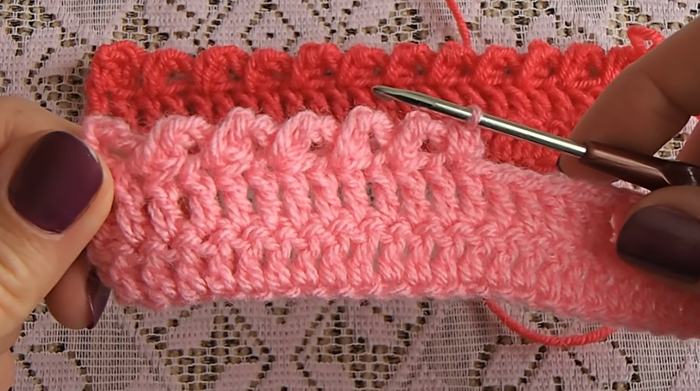
- The last chain should consist of 5 VP for symmetry.
Elastic band "A la crab step"
This technique is suitable for decorating the edges of knitted items, hats. The elastic is made in several rows, since the finishing edge with 1 row knitted with this pattern will look unfinished, and the pattern will be invisible. Beginners only need to know how to make a single crochet to make the pattern.
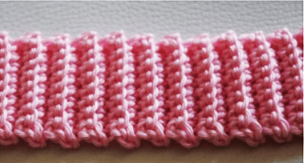
The knitting example is considered without tying the main fabric ("from scratch"). If it is necessary to continue the already finished work, it is necessary to make the last row using SC before starting the elastic.
Knitting algorithm:
- First, make a chain of the required number of air loops, add 2 VP to it for lifting.
- Turn the work over (when knitting in the round, connect the chain without adding 2 VP at the end), step back 2 lifting VP, knit all the SC into each loop.
- Make 1 VP for lifting. In order not to unfold the fabric, make a classic crab step from left to right using SC, inserting the hook behind the back walls of the loops of the previous row.
- The next row is knitted from right to left, performing all sc.
- Continue knitting rows, alternating points 3 and 4.
It should be taken into account that the elastic band is horizontal. That is, its linear length will correspond to the width of the main knitted fabric. To attach the elastic band to the main product, make a row of connecting posts.
You can also make a hair hoop using this technique. It won't squeeze your head too much, but will firmly hold the strands.
Tips for using knitting techniques on different items
The techniques for knitting the crayfish step are not universal; not every method is suitable for tying any product:
| Knitting technique | What is it suitable for? |
| Classic knitting technique from right to left and left to right | Since the edge of the product is not elastic, the classic crayfish step methods are used to give the products rigidity. The method is suitable for edging:
The knitting method is not suitable for:
|
| Lush tying and techniques with air loops | These knitting methods are suitable for edging items that need a moderately elastic edge. For example, for tightly knitted hats, decorative shawls, and home textiles. |
| Serrated crab step | This technique of making edging is suitable for any products, the edge of which should be openwork. Knitting does not affect the elasticity of things: it remains the same as that of the main knitted fabric. |
| Crab step in the form of an elastic band | The method is used to tie the bottom edge of outerwear and sleeves. The elastic is moderately dense, which allows the clothes to keep their shape and not stretch while wearing. |
Beginners will be able to perform a crochet step in the classic version, and with a little experience, you can knit a finishing row in a more complex technique. This pattern is a basic element in knitting, since it is with its help that work is completed with most knitted products.
Video about the "Crayfish Step" harness
6 ways to tie products in small steps:
